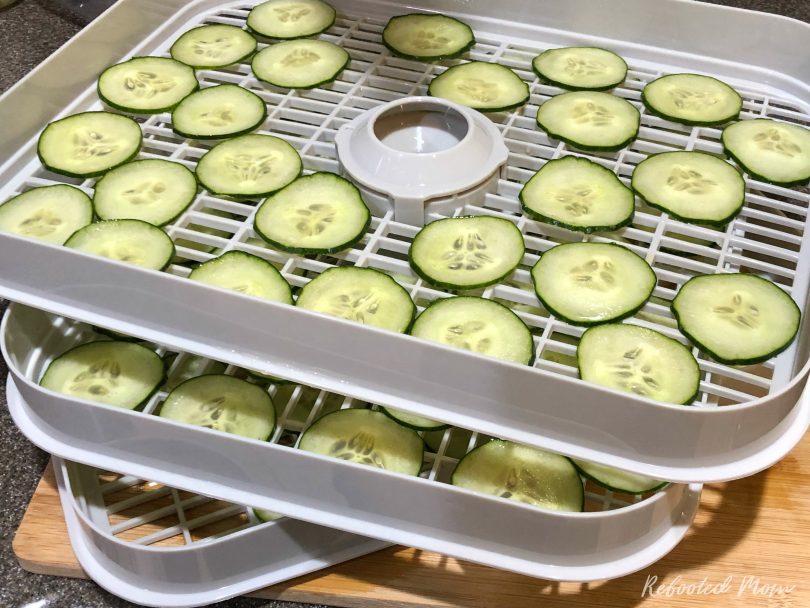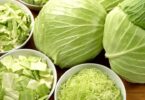Let’s learn how to dry cucumbers.
There is no other vegetable, that’s cooler than a cucumber. Cucumbers may not have as much taste when compared to other products, but that does not mean that they do not have any benefits.
They’re low in calories, while high in nutrients, such as protein, vitamin C, vitamin K, magnesium, potassium, and manganese. These fruits have antioxidants (flavonoids and tannins), which are known to reduce risks of cancer and heart disease.
Although cucumbers are a good source of hydration and consist of 96% water, you will be surprised to know that they can also be enjoyed dry like most other produce.
Dehydrating cucumbers will come in handy, especially when the refrigerator is filled with too many fruits and vegetables to consume before they spoil.
How to Dry Cucumbers
There are three easy techniques for drying cucumbers, either by using a dehydrator itself or an oven or microwave.
Drying cucumbers in the food dehydrator
Dehydrators are a great investment since they give longer shelf lives to food, preventing things from going to waste. They also reduce the hassle involved in drying since they’re equipped with a timer.
- To prepare dried cucumbers using a dehydrator, you first need to use a sharp knife to slice the cucumbers into rounds (roughly 1/8 of an inch). Keep in mind that the more consistent the sizes of the slices are with each other, the more evenly they will dry.
- Next, arrange the freshly cut slices onto the tray of the dehydrator. Maintain an even distance between each slice to prevent improper or uneven drying.
- After that, place the tray inside the dehydrator. Adjust the temperature anywhere between 120 to 140 degrees Fahrenheit, then turn it on.
This dehydration process will take six to eight hours, depending on the preferred consistency. The actual time it takes to dehydrate will also depend on how thick the slices are, the temperature they are set to, and many other factors.
When the cucumber slices no longer bend, they’re finally done. Remove the tray of cucumbers out of the dehydrator and leave them to set until they reach room temperature.
Store small amounts of the cucumbers in airtight plastic bags and place them in a cool, dark place for storage.
Drying cucumbers in the oven
Not all households have a dehydrator. And of course, not everyone is willing to invest in such a device. Luckily, drying cucumbers can still be done if you have an oven.
- Start by chopping the cucumbers preferably into 1/8-inch rounds. On a parchment-lined baking sheet, arrange the slices so they do not touch to prevent them from sticking together after they have dried.
- Next, set the oven to the lowest temperature possible, preferably around 150 degrees Fahrenheit. Depending on your oven, the process will take an estimated time of four to eight hours.
A tip to remember when drying a sheet of cucumbers is to place it on the middle rack of the oven, or if you are drying two sheets, place them in the top and bottom racks to quicken the process.
When it is time, check a few of the slices. Again, if they no longer bend, they’re already sufficiently dried. Remove the slices from the oven and let them cool to room temperature. Then, store them in sealed plastic bags.
Drying cucumbers in the microwave
While not ideal for drying produce, the microwave is suited for beginners. It gives you an idea of whether dried fruits or vegetables actually suit your preferences.
- Start by chopping the cucumbers as thinly as possible. Then, proceed to wash and thoroughly dry the microwave’s rotating plate. Once you’re done, arrange the cucumber slices on the plate.
- Now, put it in the microwave, switch to defrost, and set the timer to half an hour. After that’s over, flip the slices over and run the microwave for roughly the same amount of time.
- Check back in every five minutes and if the cucumber slices are sufficiently dried, put them on a cooling rack. Otherwise, continue to dry them for a few more minutes.
Like with the other methods, all that’s left for you to do is pack the cucumber slices in sealed plastic bags. And again, be sure to store them in a cool, dark place.
Pointers to Remember
Here are some tips to keep in mind when drying cucumbers:
- Only perfectly ripe cucumbers should be chosen for the process.
- If the cucumber is waxy and thick-skinned, it is suggested to peel the skin, chop the cucumber lengthwise in half, and remove the seeds. Proceed to slice the cucumber into shapes that resemble a half-moon, then continue with the directions given above.
- If the air of the food dehydrator flows in a vertical direction, it is best to move the trays at least once. This will make sure the cucumber is evenly dried. However, if the air flows in a horizontal direction, you don’t need to worry too much about this being an issue.
- Conditioning is known as the process used to equalize moisture when drying fruit. It prevents the growth of mold, especially if the cucumbers have dried to a leathery texture. It’s actually a simple process. Load the dried cucumber loosely into a container, like a sealer jar or a large bag, for seven to ten days for distributed moisture. After that, they can be divided and packaged for long-term storage.
READ ALSO: How to Store Dried Vegetables
Since dried cucumbers aren’t really that common, you may be wondering how to eat or use them. Well, they are both healthy and delicious as a snack.
They can also be used in many dishes, all while providing a majority of the benefits a regular cucumber would have. They can be used as a crunchy ingredient in salads, pureed to make salad dressing, turned into a soup base, or even be put in smoothies.
READ ALSO: How to Make Cucumber Chips
All in all, if you often overload your refrigerator with more produce than you can realistically consume, maybe it’s time to start dehydrating those fruits and vegetables—and for something easy, start with drying cucumbers.





